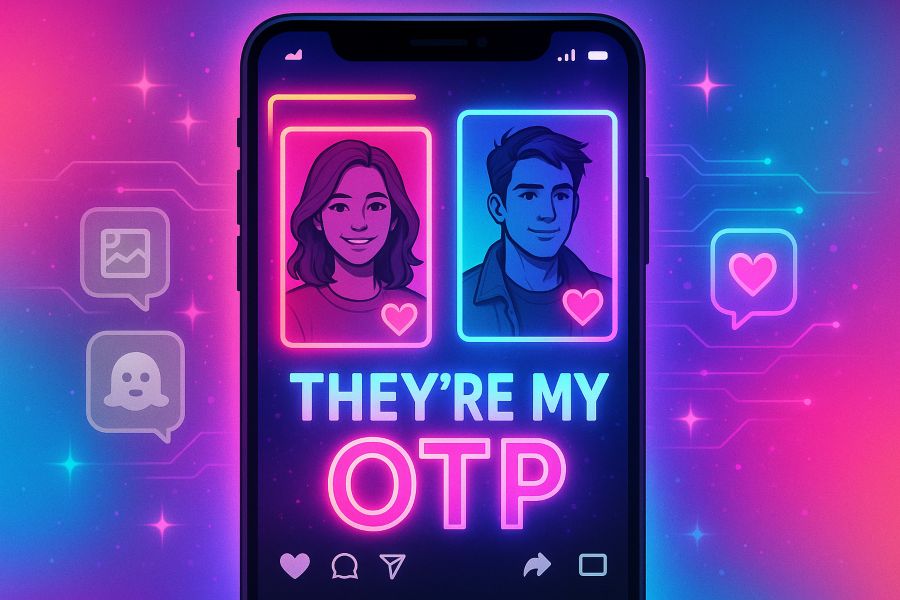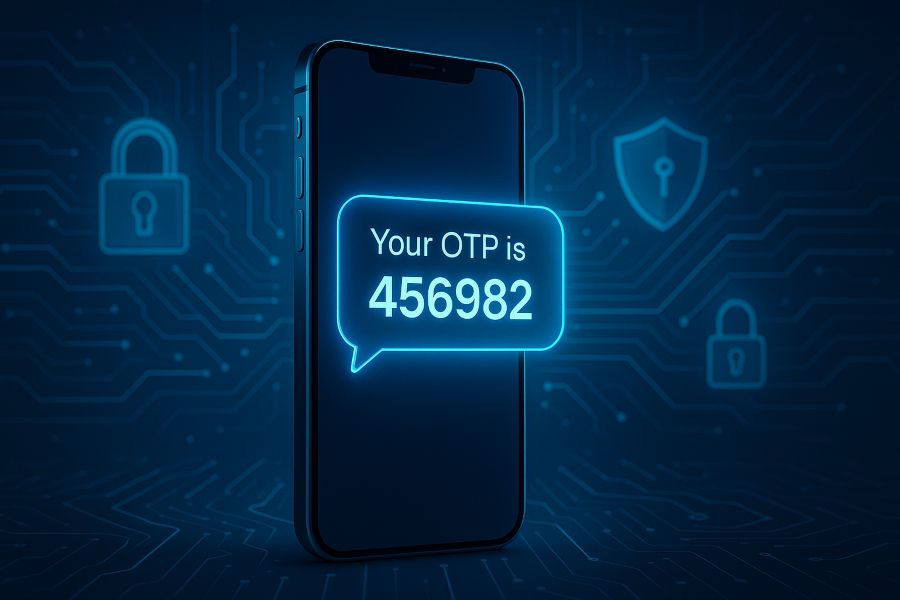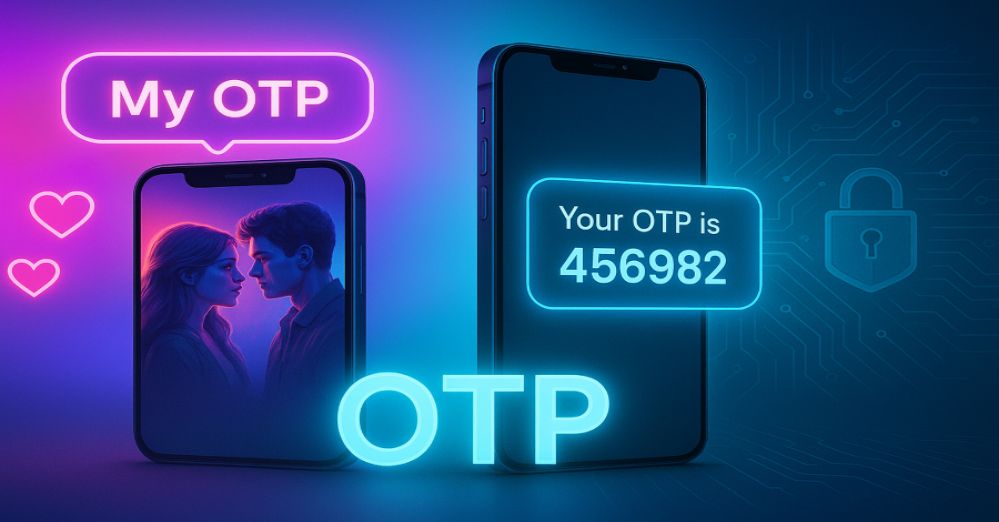Online language evolves faster than almost anything else in culture. Acronyms appear overnight, spread through social media, and take on lives of their own.
Sometimes one set of letters can have multiple meanings, which can confuse parents, teens, and even professionals.
A prime example is OTP. These three letters pop up in TikTok captions, WhatsApp chats, fanfiction tags, and also in app notifications when your bank needs to confirm a payment.
The tricky part is that OTP has two major interpretations. One belongs to the world of fandom slang and storytelling.
The other belongs to the world of cybersecurity and financial protection. Both are equally real and equally widespread in 2024 and 2025, which means that understanding OTP requires a little context.
What Does OTP Mean in Text
When people use OTP in text, it almost always means one of two things. The first is One True Pairing, a slang term in fandom spaces that signals a fan’s ultimate couple or relationship.
The second is One-Time Password, a technical term in banking, shopping, and authentication systems. The difference between them is enormous, but context usually makes the meaning clear.
Someone posting “They’re my OTP” on TikTok is celebrating a fictional couple. Someone receiving a message that says “Your OTP is 456982” is being asked to verify identity with a temporary security code.
Why Two Meanings Exist
These meanings grew up in parallel. In the early 2000s, fan communities wanted a shorthand way to declare loyalty to fictional relationships, and OTP was born.
At the same time, computer scientists were working on stronger security methods for online systems, and OTP codes became a standard solution.
Instead of one meaning replacing the other, both spread across the internet. Now, OTP serves as an unusual acronym that thrives in both entertainment and technology.
OTP as Slang: One True Pairing
One True Pairing, or OTP, is rooted in fandom culture. It describes the couple a fan considers perfect, often regardless of what actually happens in the story.

1. Origins of OTP Slang
The phrase first gained traction in early online fanfiction communities. Writers wanted to highlight which relationship their story focused on, so they tagged it as their OTP. Over time, the term spread to LiveJournal, Tumblr, and eventually mainstream platforms. By the 2010s, OTP had entered everyday conversation among teens and young adults.
2. How It’s Used
Imagine a friend texting, “Percy and Annabeth are my OTP forever.” Another fan might tweet, “Klaus and Caroline were robbed, they were my true OTP.” On TikTok, an edit showing romantic moments between anime characters might be captioned, “Ultimate OTP energy.” Each of these examples shows how deeply fans connect to their chosen couples.
3. Cultural Impact of OTP Slang
OTP isn’t just about personal preference. It fuels fandom culture itself. Entire communities form around debating which pairings should be canon. Some fans even create alternate universes where their OTPs exist, regardless of what the official storyline says. These debates often spill into broader internet culture, creating memes, hashtags, and viral edits. Shipping wars, where fans argue over rival OTPs, can dominate online spaces after big TV finales or anime releases.
4. Examples of Popular OTPs
Harry Potter fans often cite Ron and Hermione as their OTP, though others insist Harry and Hermione made more sense. Stranger Things fans rally around Mike and Eleven. Anime fans push Naruto and Hinata as an iconic OTP. In the K-drama world, Doona and Won-jun from Doona! Recently became a trending OTP thanks to TikTok edits. Even Barbie and Ken from the 2023 film became a playful OTP across social media.
OTP in Technology: One-Time Password
The other meaning of OTP is far more serious. A One-Time Password is a security mechanism used by banks, apps, and websites to protect accounts.

How OTP Works
When you try to log in or make a payment, the system generates a temporary code. This code is sent to your phone, email, or authenticator app. You must enter it within a short time frame. Once it expires, it cannot be reused. Even if a hacker has your password, they cannot access your account without the OTP.
Types of OTP Systems
There are two main kinds. HOTP, or HMAC-based One-Time Passwords, generate codes based on counters that increase with each use. TOTP, or Time-based One-Time Passwords, generate codes that refresh every thirty seconds. Banking apps and Google Authenticator usually rely on TOTP. Both systems are designed to make it nearly impossible for hackers to predict the right code.
Why OTP Matters in Security
Passwords alone are weak. They can be stolen through phishing, leaked in data breaches, or guessed. OTP codes add another layer. They are a cornerstone of two-factor authentication, which is why most major apps, from Gmail to PayPal, require them. In 2025, OTP remains a vital barrier between everyday users and cybercriminals.
Everyday Examples
A bank sends, “Enter the OTP sent to your registered mobile number.”
An online store emails, “Your OTP for checkout is 937426.”
A workplace IT system prompts, “Use the OTP from your authenticator app to log in.”
These scenarios happen so often that many people enter OTP codes without giving them much thought.
How Context Shows the Difference?
Because OTP means such different things, context is everything.
1. Clues in Casual Chats
If someone is talking about shows, couples, or favorite characters, OTP means One True Pairing. The language will be emotional, light, and centered on entertainment.
2. Clues in Formal Notifications
If the message involves numbers, apps, or time limits, OTP means One-Time Password. The tone will be formal and instructive. It may also include warnings not to share the code.
3. Side-by-Side Chats
Friend 1: “Do you watch Stranger Things?”
Friend 2: “Yes, Mike and Eleven are my OTP.”
Bank: “Your OTP is 472839. Enter it within 5 minutes.”
User: “Got it, thanks.”
The difference could not be more apparent when seen side by side.
The Risks Around OTP Codes
While fandom OTPs are harmless, One-Time Passwords carry risks if misused.
Scam Attempts
Scammers often impersonate banks or delivery companies and call users asking for OTP codes. Once the victim provides the code, the scammer uses it to access accounts. This type of fraud has grown in recent years, which is why banks stress that no employee will ever ask for your OTP.
Weaknesses of SMS OTPs
SMS OTPs can be intercepted through SIM-swap scams. Hackers convince a carrier to transfer a victim’s phone number to a new SIM card, then receive all OTP texts. This is why security experts recommend using authenticator apps instead.
How to Stay Safe
Users should never share OTP codes with anyone. They should always double-check the source of an OTP request. For added protection, switching from SMS OTPs to authenticator apps reduces risk.
Parents and OTP
For parents, OTP can be confusing. On one hand, kids may gush about their OTP couples online. On the other hand, banks and schools may send OTP codes for login.
Recognizing Fandom Use
When a child says, “That’s my OTP,” they are almost always talking about a favorite couple from a book, movie, or show. There is no need to worry about security in this context.
Recognizing Security Use
When an app or bank prompts for an OTP, it is a One-Time Password. This must be treated seriously and kept private. Parents should remind children never to share OTP codes with friends or strangers.
Educator Perspective
Teachers and guardians can use OTP as a teaching moment. Explaining both meanings helps young people understand internet slang while also learning digital safety.
Extended Examples of OTP in Use
OTP slang appears in text conversations like this:
A: “Naruto and Hinata are the real OTP.”
B: “No way, Sasuke and Sakura are better.”
OTP security shows up in messages like this:
Email: “Your OTP for password reset is 284916. Do not share this with anyone.”
User: “Okay, I’ve entered the code.”
Both are valid, both appear daily, and both rely on those three letters.
Why OTP Became a Double Life Acronym
The timeline matters. Fandom slang around OTP surged just as digital security OTPs became common. Neither meaning is likely to disappear. Instead, OTP will continue as a term with two identities, depending on the space where it appears.
In Fandom
As long as stories are told, fans will create OTPs. Every big release brings new debates. In 2024, K-dramas and anime continued to dominate TikTok OTP edits. In 2025, superhero franchises and fantasy adaptations are likely to bring fresh OTP rivalries.
In Technology
OTP as a security measure is slowly evolving. Many companies are moving away from SMS toward stronger authenticator apps. Some are adopting biometrics, such as fingerprints or facial recognition, as alternatives. Yet for now, OTP remains central to two-factor authentication.
Related Acronyms
Language around OTP connects to other terms. In fandom, “ship” and “canon” are essential companions. A ship is any relationship fans support, while canon is what the creators officially make true.
In technology, OTP lives inside larger systems like 2FA, or two-factor authentication, and MFA, or multi-factor authentication, where multiple security steps combine to protect accounts.
Conclusion
OTP is one of those rare acronyms that lives a double life online. In fandom spaces, it’s all about love, passion, and storytelling — the couples people defend with endless edits, debates, and fanfiction. In technology, it’s about safety, verification, and protecting accounts from hackers. Both meanings have grown so deeply into digital life that you’re almost guaranteed to encounter them in different contexts, sometimes on the same day.
The trick is always context. A teen raving about their OTP is talking about characters, not security codes. A text from a bank urging you to enter an OTP is about keeping your money safe. Learning to recognize the difference prevents confusion, helps parents understand their kids, and keeps users protected from scams.
As language and technology keep evolving, OTP will remain a cultural marker in both fandom and cybersecurity. Whether it’s your favorite fictional couple or the six-digit code that unlocks your account, those three letters remind us just how flexible digital language can be.
FAQs
What does OTP stand for in texting
It usually means either One True Pairing in fandom slang or One-Time Password in technology.
What does OTP mean on TikTok?
On TikTok, OTP almost always refers to fandom couples featured in edits and captions.
Is OTP safe
In technology, OTP codes are safe if used correctly. They protect accounts but should never be shared.
Can OTP mean anything else
Occasionally, OTP is used to mean On The Phone. This usage is rare today.
How do I know which OTP meaning applies
Look at the context. If it involves shows or characters, it is slang. If it involves codes, numbers, or apps, it is security.


